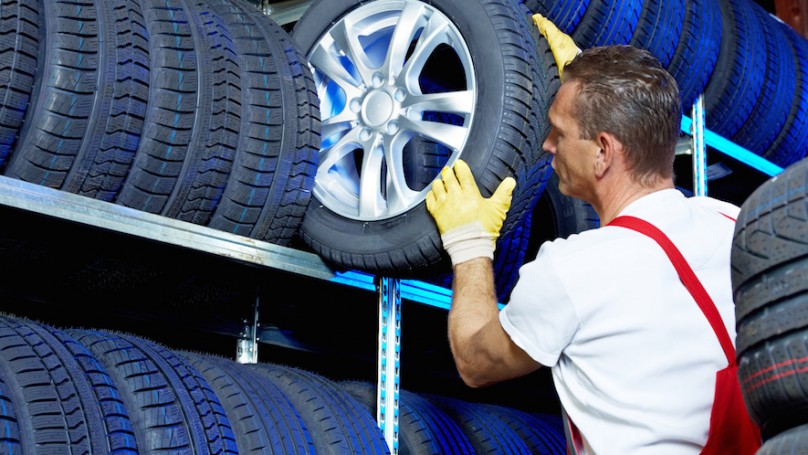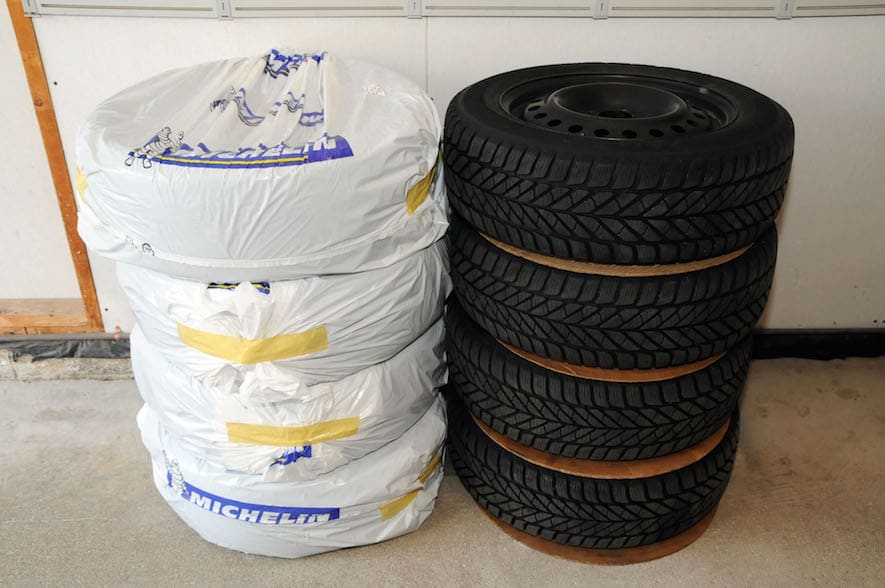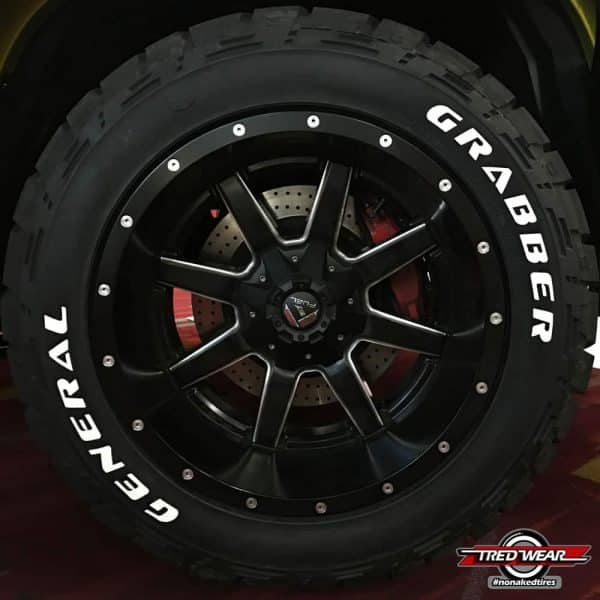As the seasons change, you may need to consider replacing your occasional tires. Regardless of whether you’re switching to winter tires or summer tires, it’s essential to find how you store your slow time of year set. That’s why you should know about how to store winter tires, along with seasonal ones.
You may have them changed by an expert or do it in your garage at home. Be that as it may, what do you do after they have been taken off? Realizing how to store tires after expelling them from your vehicle is basic. It’s a higher priority than a great many people figure it out.
If you don’t deal with and store your tires appropriately, their qualities can change. This can abbreviate their life. They can even decay so severely away that they should be supplanted. Yet, if you handle and store them effectively, they will convey long stretches of administration – and you’ll set aside cash.

The steps should be taken before storing tires
If the vehicle is intended to be put away for extensive periods, plan to move the car occasionally during storage. So, the tires aren’t exposed to a consistent condition of diversion influencing just a single piece of the tire.
Clean your tires before storage
Tires, much the same as some other piece of the vehicle, will, in general, get grimy. Evacuation of any of the tire dressings applied, earth, and brake residue will assist with guaranteeing that your tires are liberated from contaminants before storing.
Use a warm, sudsy shower and wash the tires, then flush with water for this piece of the cleaning procedure. Likewise, take the time after cleaning to guarantee your tires have completely dried before going any further.
Keep up suggested pneumatic force
If your tires are left on the wheels for storage, keep up the vehicle maker prescribed pneumatic stress.
Choose and get ready for what you intend to store the tires in
Putting away your tires in sacks (dark and water/air proof) is prescribed in case you’re ready to store your tires inside. Grass and leaf sacks are regularly useful for this errand, fixed shut with a hardcore tape to assist with tripping the components.
Preceding fixing, attempt to evacuate however much of the air from the pack as could reasonably be expected. Then assist with forestalling the tire mixes from drying out.
The places you should avoid storing tires
By storing your tires in a clean, well-ventilated, cool and dry climate-controlled environment, you’re avoiding one of the main issues here. That is sunlight. Direct sunlight and the heat generated by it can accelerate the ageing process of the tire.
It is also essential to avoid storage areas near battery chargers, generators, welding equipment, and electric motors, such as furnaces, water heaters, central vacuums, or even a basement sump pump. Each of those motors may produce and emit small amounts of ozone which isn’t ideal for tires while being stored.
If you are planning to use other tire protectants or cleaning products, read the product labels and be aware of what other chemicals are going on your tire. Stay away from using any petroleum-based cleaning products, as the products may degrade the rubber’s weathering agents that may lead to premature cracking.
Exposure to harmful products and chemicals such as petroleum-based products, gasoline, and any other solvents and substances may degrade the rubber’s weathering agents. How to store tires without rims, that’s the question we’ve replied.
Preparation done, then how can we do the storage?
Check tire condition
This is a decent time to assess the state of your tires, searching for breaks and crumbling of maturing elastic. Check the tire profundity; if it is near or at the wear marker, you are going to require another arrangement of tires for the beginning of the following regular change over. Spending limit and get ready to make that purchase.
Careful examination
Using a screwdriver, select the little stones stuck between the track squares, so the track is put away without being extended. Check tire weight and change under the suggested PSI. Check valve stems from guaranteeing they are not seized.
Bag tires

It is beneficial to place each tire in a dark plastic sack, make it as impermeable as would be prudent and tape it shut. This assists with keeping the oils in the elastic from vanishing, which prompts drying and breaking. Packs shield the tire from ecological stickiness and dampness changes too.
Keep them inside
The most significant part of tire storage is to keep them in an atmosphere controlled indoor area, for example, your cellar, warmed carport or workshop. Try not to leave tires outside exposing them to nature’s components. The sun’s bright beams will abbreviate tire life. The downpour and other climate components will also quicken tire debasement.
House stockpiling
If putting away tires in your home, get them far from things that radiate carbon monoxide. For example, a heater, focal vacuum or sump siphon. Keep tires in a cool, dry area free from dampness change. Storage rooms are not a reasonable spot to store tires.
Tire storerooms
If you don’t have enough room for storing tires in the house, investigate tire stockpiling choices with your specialist or vehicle sales centre. Some offices represent considerable authority in regular tire stockpiling. They will get and restore your regular tires when it’s an excellent opportunity to transform them. The average expense of occasional tire storing (a half year) is $60-$80.
Carport stockpiling
Numerous individuals decide to store tires in their unheated carport or shed. Temperature and dampness vacillations make this condition not precisely perfect. However, if this is your only choice, it’s better to leaving them outside. It’s alright to stack tires over one another. If you sack them, when there’s a defensive hindrance, put cardboard or a towel between the tires to keep the edges from getting scratched.
Tire rack and stands
There is an assortment of tire stockpiling frill accessible at auto supply stores, for example, tire racks stands and retires. Canadian Tire (for instance) has various models going from $40-$130. By draping them on the carport divider, tire racks and stands are a pleasant method to get your tires off the floor and the beaten path.
It is also like (however not fundamental) standing tires upon their track for delayed capacity as opposed to stacking them over one another. Tire racks are more aesthetics and ordering your carport than primary tire care.
White-letter tires

If not putting away white letter tires in plastic packs, stack them white-to-white and dark to-dark to forestall recolouring the white elastic. If you stack tires over one another, place a tranquillity of cardboard or towel in the middle of the tires to keep the white letters from recolouring.
Regardless of what level of precautionary measures you take in setting up your regular tires for capacity, the elastic will work in the long run.
Be that as it may, by following the above advances, your tires will last more. Also, you’ll be better arranged for the difference in a season when it comes time to switch your tires in the spring and fall.
How to store tires mounted on rims?
The best method for putting away mounted tires is via hooks through the edge itself. This keeps the weight off the tire and decreases the danger of the tire laying on a solitary flex point.
Note: It’s significant that this technique is possibly used if the hook is mounted through the edge itself. Balancing tires from hooks not attached on a corner may cause misshaping of the tire because of sporadic weight applied on the hook.
On the other hand, you can store mounted tires in a stack, vertically, with the sidewall looking down, so the heaviness of the edge isn’t pushing down on the track of the tire during capacity.
Final words
I know that appropriate tire stockpiling can appear to be somewhat mind-boggling. Although, following basic storage practices and keeping an eye out for potential dangers can help lead to an ideal life expectancy of your tires.